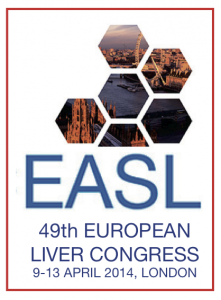WHO launch treatment guidelines for hepatitis C (2014)
27 May 2014. Related: Conference reports, Guidelines, Hepatitis coinfection, EASL 49 London 2014.

Simon Collins, HIV i-Base
Just prior to EASL 2014, the World Health Organization launched the first guidelines for the care and management of people living with hepatitis C (HCV).
WHO currently estimates that 130-150 million people globally are chronically infected with HCV, 3-4 million people are newly infected each year and that HCV is responsible for up to 500,000 deaths annually.
The guidelines make nine recommendations, divided into four key areas:
- Increasing screening.
- Reducing HCV progression and liver damage in people with chronic HCV.
- Guidelines for HCV treatment.
- Reducing future new infections.
The guidelines include appropriate sections on people who inject drugs (PWID), coinfection with HIV (and sexual transmission of HCV in HIV positive gay men), with recommendations for using the most recently licensed antivirals sofosbuvir and simeprevir.
They reference the issue of cost by recognising that these drugs will remain unaffordable for most people who need treatment.
The guidelines are due to be revised in 2016 with an interim update in 2015 to refer to newly approved treatment.
At the WHO press launch for the guidelines, held at 7.30 am on Thursday morning, comments were broadly very supportive and encouraging.
“These guidelines are a powerful tool for activists who are working for access to affordable treatment”
“A great first step – now we need the resources to implement them without bankrupting health budgets. Drug prices must come down.”
“I hope the message is clear: although the first generation protease inhibitors increase cure rates in genotype 1, they are too toxic and difficult to manage – wherever the setting. These drugs really should not be used anymore.”
The guidelines were funded by the US Centers for Disease Control and Prevention and the Ministry of Health, Labour and Welfare of Japan.
The guidelines are online at:
http://www.who.int/hiv/pub/hepatitis/hepatitis-c-guidelines/en/
Direct PDF link (1.7 Mb)
http://apps.who.int/iris/bitstream/10665/111747/1/9789241548755_eng.pdf?ua=1

